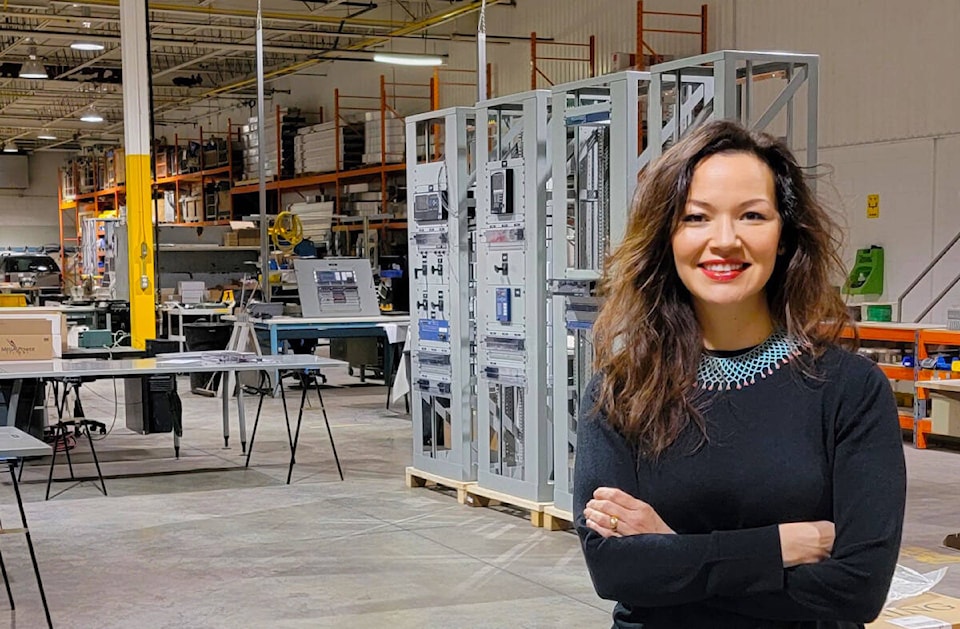Yellowknife’s Fiona Blondin has taken her leadership skills to KWG Resources as the Ontario-based exploration company attempts to advance its projects in the Ring of Fire.
Blondin worked at the Ekati mine for three years when it was owned by BHP and still in its early stages of development. Filling a role in the securities division, she witnessed the mine progress from the construction phase to becoming operational.
“I look back at that period of time as being foundational in my career and in my approach,” says Blondin, who was in her early 20s during that period. “I really felt that it opened up a lot of opportunities for our people around employment and I really learned a lot from that experience … I learned a lot about the impact of policies within the organization for Indigenous people. I learned a lot about how Indigenous people can play a greater role.
“Twenty-five years ago, our role within mining was really surrounding employment … 25 years later, our whole sector and our participation within mining companies has really dramatically evolved.”
It is with that mindset that she accepted an appointment as a director on KWG Resource’s board in September. She says boards are starting to become more diverse and inclusive.
“I feel that it’s important to have representation (from Indigenous communities)… the companies that we work with should understand our values around the environment, should understand why we’re taking the approach that we are,” she says. “I think that Indigenous communities have an expectation that the people they work with reflect their own populations.”
She points to various examples around the country where Indigenous groups have taken an ownership stake in mining projects, such as the Tahltan First Nation partnering with Skeena Resources on a gold project in British Columbia’s Golden Triangle.
“The Tahltan are really taking a leadership role in their approach to working with mining companies and their approach to the Golden Triangle, and their personal investment as a nation in ownership as Indigenous businesses, as a nation and even potential owners and investors within mining,” she says.
“(Indigenous people) are making a huge impact on the Canadian economy at this point. I really believe that we have strong connections to the land. We have strong connections to each other, and we strong we respect for each other… I’m also starting to see a greater change in strategic alliances that are building with Indigenous communities, when you’re starting to have more than one community – sometimes more than five communities – work together to create… business alliances or alliances for the region.”
After working with BHP, Blondin was hired by Sheila Copps, then-minister of Canadian Heritage, which exposed her to the distribution of core funding for off-reserve First Nations as well as “powers shaping the country” while in Ottawa.
From there, she took a position with Ishkonigan, a consulting firm owned by Phil Fontaine, former national chief of the Assembly of First Nations. She referred to Fontaine as an “inspiring leader nationally,” and the role she took on as “really transformative.”
“This was so valuable in refining my approach to the work that I do to this day with Indigenous communities,” she recalls.
‘Support that vision’
Blondin emphasized that the key to moving forward for industry is to truly understand the goals that Indigenous groups set for themselves: “Letting the communities lead the way and what we can do to support that vision,” she says. “Each nation has different concerns. Whether you’re Indigenous or non-Indigenous, I think that we all have a huge investment in the environment. Even sitting on the board of directors for a mining company, I feel highly invested in the environment. I feel highly invested in our approach and what we plan to still have seven generations from now.”
Earlier this year, she became director of Indigneous Strategy with Cormorant Utility Services, based in Cambridge, Ont., about 90 minutes outside of Toronto. She was thoroughly impressed with John Risley, a major shareholder in Cormorant, who sold half of Clearwater Seafoods to Indigenous ownership in 2020.
“When I came to Cormorant Utility, I knew I was in the right place,” says Blondin.
KWG Resources is exploring chromite deposits in the James Bay Lowlands of Ontario, part of mineral-rich area known as the Ring of Fire. Chromite is integral in the making of stainless steel.
The board of directors’ “focal point” will be working with Indigenous communities, she says.
“I feel highly invested in the outcome of communities and the work that they’re doing with mining. I feel invested in seeing our people create opportunities for our own nation. I feel like those key pieces of my experience and approach is what I’m bringing to KWG Resources,” says Blondin, now a 49-year-old grandmother. “I feel strongly about Indigenous ownership and the opportunity should always be for all the Indigenous communities to have the first chance to own all project-related infrastructure and, potentially, mine sites themselves and I bring that strong vision with me to the work that I do with boards of directors.”
Blondin spent the early part of her childhood in Yellowknife.
Her mom, Georgina, attended the University of Alberta to attain her teaching degree, bringing Fiona with her while she was in elementary school. Her aunt Ethel Blondin-Andrew also earned a teaching degree. All three of them then moved to Fort Providence where her mom and Ethel worked as teachers.
Her mother later moved to Vancouver to pursue her master’s degree.
Although Fiona has been living in Ontario for the past two decades, she still feels a strong connection to the NWT.
“When I wake up in the morning I think about home, I think about home, about the North,” she says.
